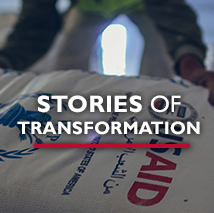How Asia develops is critical to U.S. economic and security interests. A leading U.S. export market, Asia is projected to remain the world’s fastest growing region through the next decade, presenting tremendous untapped market potential. Yet, at the same time, Asia grapples with immense development challenges that threaten to derail this promising future.
Despite the region’s growing wealth, income inequality across much of Asia is rising, further entrenching the nearly half of the world’s extreme poor who live there. Countries are constrained by weak regulatory environments, unsustainable debt, lack of infrastructure, and corruption — conditions that impede the power of enterprise-led development and undermine the long-term stability of our partners.
Against this backdrop, Asia is experiencing a wave of closing democratic space, rising autocracy and increasing religious intolerance. Unchecked human rights violations have led to ethnic cleansing and destabilizing mass migrations, as we have seen with Burma’s Rohingya. Asia’s natural disasters — which number more than any other region of the world — frequently test the resilience of millions upon millions of the world’s most vulnerable. Furthermore, Asia remains a hotspot for emerging pandemic threats; widespread illegal trafficking helps fuel transnational crime and terrorism; and severe natural resource degradation threatens livelihoods and food security.
If Asia is to realize its full potential, much depends on the development journey it charts today.
USAID plays a vital role in partnering with the countries of Asia to ensure that the development decisions they make today help realize their long-term success by moving them forward on their journeys to self-reliance. We define this end-goal as the day when they are able to plan, finance and implement solutions to solve their own development challenges. We focus on fostering inclusive and equitable growth, promoting and strengthening democratic institutions, and improving natural resource management, which are key to helping partner countries achieve sustainable self-reliance. Our actions to help shape a more stable and prosperous Asia region advance U.S. security and economic priorities, including those outlined in the National Security Strategy, Indo-Pacific Strategy and South Asia Strategy.
Across the region, we aim to achieve results:
- In support of a free and open Indo-Pacific, USAID works to enable the environment for trade and investment that levels the playing field for legitimate market entrants and unlocks the power of enterprise-led growth. In Vietnam, for example, USAID has assisted in rewriting over 180 commercial laws and regulations, contributing to a significant improvement in the country’s competitiveness ranking from 82 in 2017 to 68 in the World Bank’s Doing Business 2018 report.
- In support of a free and open Indo-Pacific, USAID is working in Sri Lanka to limit opportunities for corruption by strengthening transparency and oversight of public funds. USAID supported the development and passage of the National Audit Bill, which since going into effect in August 2018, requires all state-owned enterprises to publish audited financial statements.
- In support of greater stability in South Asia, we are deepening our strategic partnership with India. In addition to exploring joint development projects with India in Afghanistan and elsewhere, we are working together to advance Afghanistan’s economic integration with South Asia. We hosted a trade show in September 2018 with the governments of India and Afghanistan that resulted in over 166 confirmed deals and more than 600 signed memorandums of understanding.
- To help drive economic growth and increase stability, we are advancing regional connectivity of the South and Central Asian countries, for example in energy. USAID plays a leading role in driving efforts to strengthen and connect the power grids in hydropower-rich Tajikistan and the Kyrgyz Republic with Afghanistan and Pakistan to alleviate electricity shortages, create jobs and generate needed revenues from energy exports and transit fees.
- We are strengthening the sovereignty and independence of the Central Asian republics, for example by increasing their economic connectivity, which helps reduce dependence on Russia. Our eighth annual Central Asia Trade Forum (CATF), held in October 2018, hit a new CATF record with over $54 million in Letters of Intent to conduct future trade deals signed.
- To help countries progress toward greater self-reliance, we are prioritizing efforts that strengthen country capacity and commitment to plan, finance and implement solutions to solve development challenges. This includes a focus on improving the reach, quality and relevance of health and education systems, which are crucial to boosting household and national wealth and driving inclusive growth.
- On Health: In the Kyrgyz Republic, we developed a new database to improve e-governance in health budget management, forecasting and planning that the government is now expanding to all 135 hospitals.
- On Education: Local governments in Indonesia have allocated $85 million to expand USAID’s successful model for improving student learning outcomes.
- On Mobilizing Resources: With USAID support, the Philippines undertook tax administration reforms that have increased tax revenues from $29 billion to $43 billion in five years.
Last updated: December 20, 2018




Comment
Make a general inquiry or suggest an improvement.